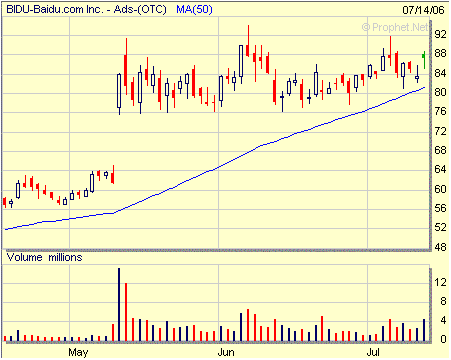There seem to be so many similarities between trading and fighting that it comes as no surprise that traders often resort to martial metaphors. The greatest theoretician of war was the Chinese sage Sun Tzu; and none of his insights from his famous treatise "The Art of War" is better known than his saying that "every battle is won before it is fought". Of course few traders have actually read Sun Tzu; but all of us have heard Gordon Gekko a.k.a. Michael Douglas quote this rule in
Wall Street.
What Sun Tzu meant was that several conditions have to be in place before you engage the enemy: make sure that you choose the battleground; arrive before the enemy does; occupy the high ground; do not reveal the strength of your forces; have the right troops at your disposal; do everything to boost your army’s moral and undermine that of your enemy; and choose when and where to attack. All conditions that have to be fulfilled before the battle has begun. (read our
Just Trade the Setups Dammit ,
The sitting
on conditions that have to be met before you enter a position).
All this requires meticulous preparation. Even our
emphasis on knowing your stock's behavior fits within this philosophy. If you have worked out everything in advance, victory is more likely. Never trust a general who is surprised by his victory; never trust a trader who is lucky enough to pocket a gain without knowing why.
Like officers who start to improvise on the battlefield, many traders run constant scans during the trading day in order to find trading opportunities, while others hover around in chat rooms waiting/hoping for someone to find a stock with potential. We prefer to prepare our lists the night before and ONLY trade from those particular stocks in our list (the same
list that is given to our subscribers every night). Unlike Sun Tzu, however, we do not believe that our method is superior; on-the-spot methods are successfully used by many traders.
However, our method fits very well with our personality. We feel that stress is considerably reduced as we are staring at a limited number of stocks (categorized by how close they are to our possible entry prices) and are not in a need to constantly run scans. We try to avoid a position which forces you to rapidly bring up the daily chart, the 60 minute chart, and try to figure out whether a trade is worth a shot or not, all the while hoping that it does not run away as you are in the decision-making process. Stress-reduction, we feel, is a factor that is critical to a trader's career. At the age of retirement we do not want to feel like we have won a Pyrrhic victory, i.e. having made a good salary at the cost of our health and relationships.
We like to be relaxed during the trading day (think the anti-Cramer: no keyboard throwing, no bruised knuckles, no crashed monitors), if the market acts lackluster and as such our picks are far away from triggering, we can let our guard down, grab a drink, and relax. Well you argue, don’t you miss the big opportunities? Possibly. However, for us, trading is a numbers game. We are not looking for the occasional home-run but rather consistency. We have been traders for 7 years; and fate willing, we shall be doing it for many more years to come. We are not seeking the exhilaration of a Vegas-like environment. Or, to stick to the military domain, we're not trying to come up with sudden ingenious battlefield moves; but rather, to be more like Eisenhower: organize, organize, and organize before you move.

We are seeking the quotidian: Day in, day out, being true to one’s rules of engagement, putting aside our opinions, and trusting our set-ups. In the long run, everything else will fall into place.










